In this article I have the absolute pleasure of talking to Amy Berge and Jen Stamps. I discovered both of these photographers whilst researching the idea of souping film as they have each written articles for Shoot It With Film on the topic (and more besides!). When I reached out to each of them for advice they were so generous with their time and knowledge and, once again, they’ve given me their time whilst I, very self-indulgently, ask them questions about their practice.
*Cover photo by me, Holly Gilman, souped in washing up liquid and boiling water and left to sit for 24 hours.
Holly: Before I ask you about how you came to soup film, I’d love to hear more about how you came to shoot film in general?
Jen: My love for film started when I randomly bought a Lomography Diana in 2012. I didn’t even know how to load it. They had a Lomography pop-up shop right next to my office, so I went in and they helped me load the camera with film. I fell in love with that little plastic camera.
From there, I bought a few more cameras, experimented; shot a lot, read everything I could about film, and took some darkroom classes. I really loved developing my film and printing in the darkroom. Now I develop my black and white film at home and still love experimenting.
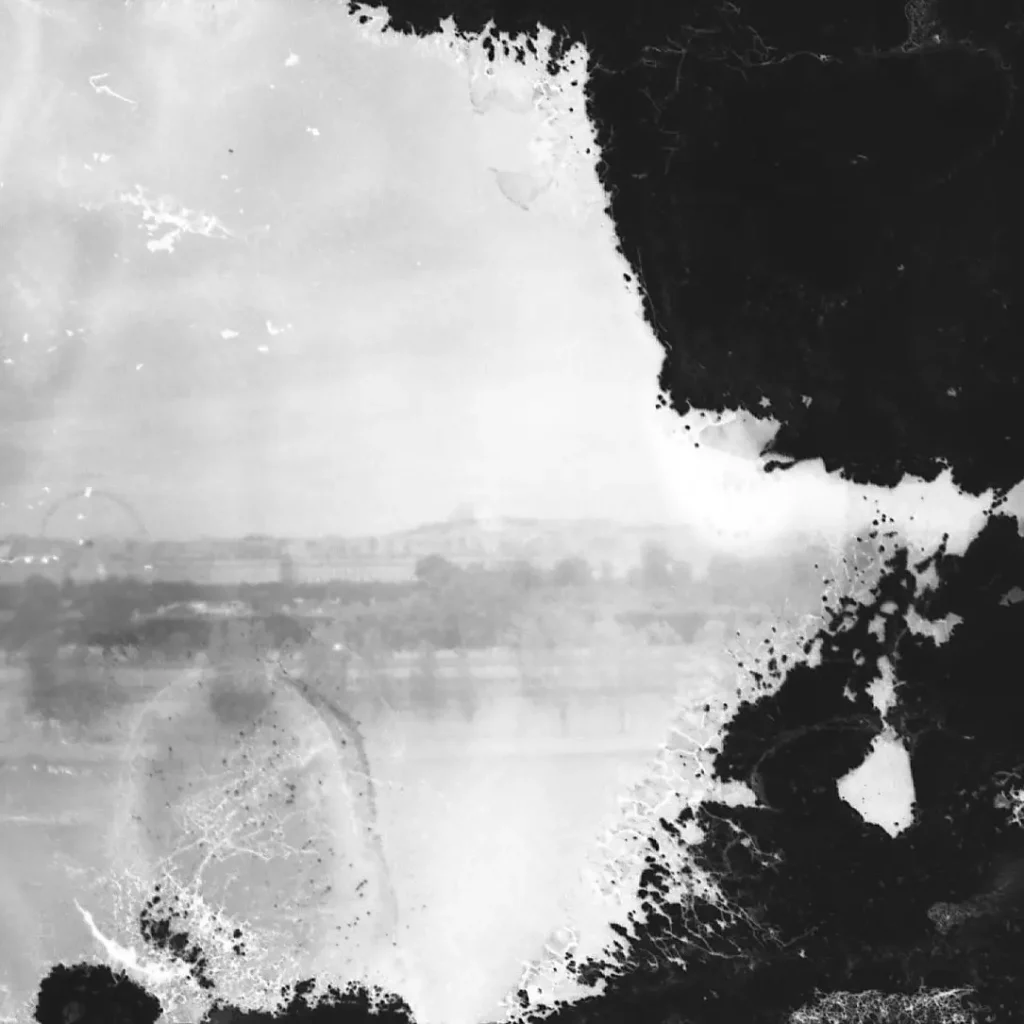
Amy: I was born in the 80s, so film was a normal part of growing up. In high school I took a couple of photography classes and got to develop and enlarge my negatives in our school’s darkroom; I would love to get back into a darkroom to enlarge but for now am grateful I have the space to develop my own film. Like most people, I hopped on the DSLR bandwagon around 2006. In 2009 I ran across a Diana Mini at Urban Outfitters and thought it would be fun to shoot film again on a toy camera. That quickly segued to finding old film SLRs to use for some personal work. It all changed in 2016 when I bought a Noritsu LS-600 scanner, which not only encouraged me to shoot more film but allowed me to get quick feedback, helping me grow in my confidence of shooting film for not just personal work but also clients. (I am a family and high school senior photographer.)
I could never quite get my digital images for clients to look the way I wanted them to and bought preset after preset to try to find “my look”. As soon as I started shooting film again, I knew that was the missing link! I spent FAR less time editing and my final images were exactly what I was going for. It felt so good to stop chasing after the perfect preset. In the beginning of switching to all film I’d go in spurts of doubting if film really made that much of a difference, but any time I picked up my digital camera and tried to edit my images I was reminded of the struggle and how film truly was my answer to getting a final image I love.
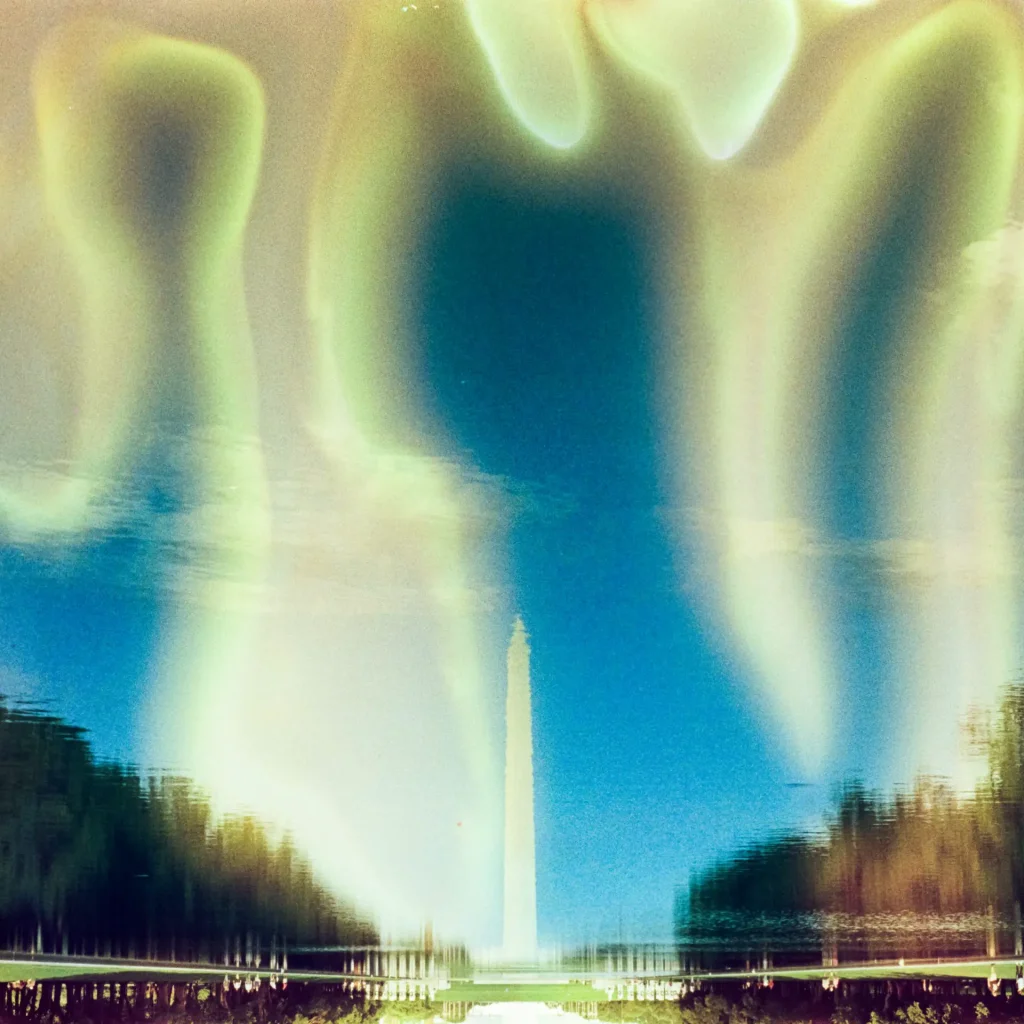
Holly: Amazing that you both came to/back to film through Lomography Diana’s! A camera that I haven’t had the pleasure of trying…yet. How did you come across the idea of souping film? What made you want to try it? And what keeps you coming back for more?
Jen: My experience with souping stems from the amazing Shoot It With Film community. Amy’s work is quite magical. Usually, the film soup you see is color. Since I don’t shoot a lot of color, I wondered if you could soup black and white film. I couldn’t see why not. And since experimenting is one of the things I love most about film, I figured I should give it a try and publish my results on Shoot It With Film. It’s so fun because each recipe is unique. It’s not an exact science, so it’s cool to see the results.
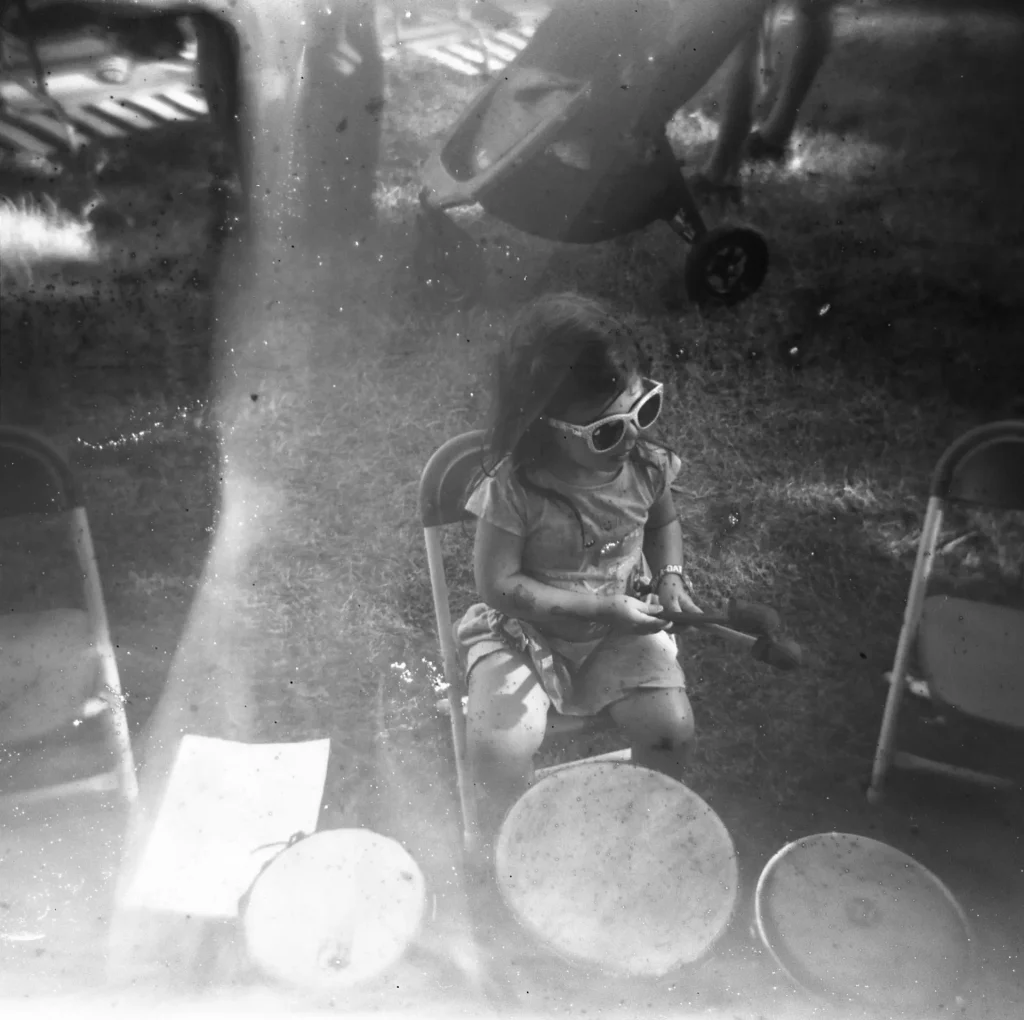
So far, I have only souped black and white, for similar reasons; I haven’t gotten round to home developing colour yet.
Amy: When I was starting to shoot with film again I stumbled upon a Facebook group of film photographers; people began experimenting with film soup and posting their results and I wanted in! It was honestly a major reason I learned to develop my own C41 film! I had already been developing all my black and white, but was using a local lab to develop my C41 before I scanned it.
I thought C41 was too tricky but honestly, it’s so much easier than people make it out to be! I love the freedom of developing on-demand and being able to push my film, cross-process, and develop my own film soup. It’s been liberating to not have to depend on labs to get my work completed. It was especially helpful when my local lab was closed for months due to COVID.
When I finally learned how to develop my own C41 one of the first things I did was try film soup. I was so-so on the images and did a couple of rolls of it but wasn’t enamoured so I only did it sporadically…
I started a personal project in the beginning of 2020 where I would interview women and photograph them and on a whim I decided to soup the rolls of the first woman I photographed for the project. Souping heightened the emotion and added to what I was hoping to say through the images. Unfortunately COVID put a stop to the project. It also stunted my creativity. I take part in a group monthly project and this year our theme is “One Day, One Roll” where we use one roll of film to document one day each month. I was feeling so uninspired and uncreative but wanted to keep participating in the project. So one month I loaded a roll of film with the freedom to just shoot without thinking, knowing I would soup it. I loved the images so much and it helped me regain my desire to create. I felt such gratitude toward film soup for helping me find this side of myself again that I started souping almost everything I shot. With each roll I seem to fall more in love with it! I also love that it’s something unique to film that you can’t duplicate on digital. I mean, you can use overlays to create similar effects, but the utter randomness and serendipitous moments are something that can only be done on film.
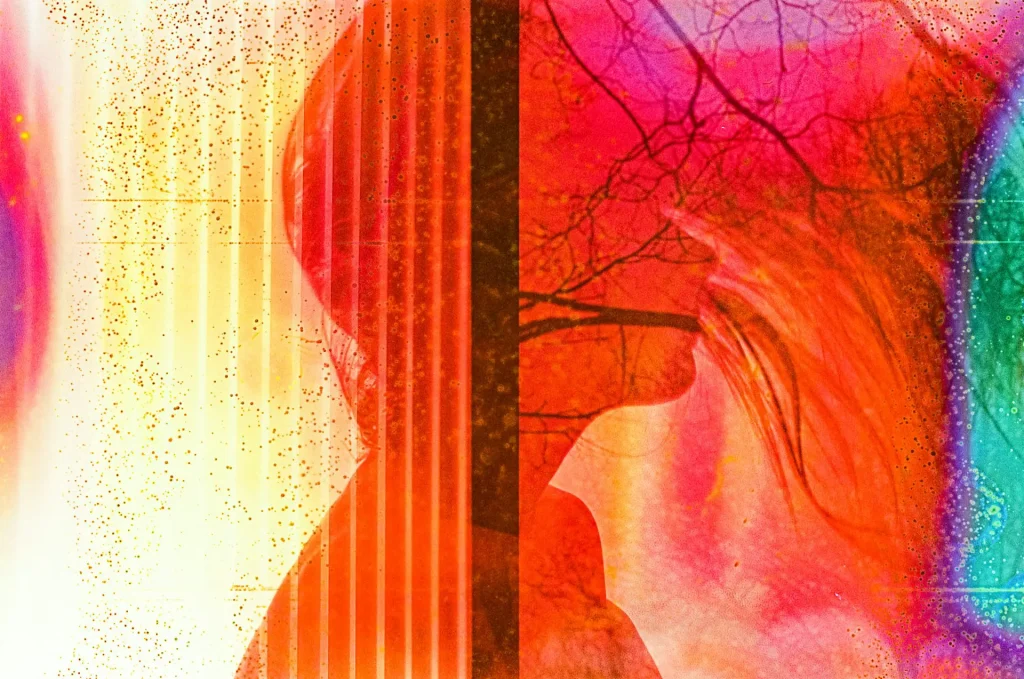
Holly: I love the sound of your project shooting women and then souping the film, I really hope you’re able to complete that or at least get to a point where you can share the images soon, I’d love to see them. Do you have any favourite recipes or specific ingredients and what effects do they give to the final image?
Jen: It’s hard to say if I have a favorite. None of my souping experiments have used a single ingredient, so I don’t know which of the ingredients gave me which results. I’d need to experiment more with fewer ingredients. However, I will say that I’ve experimented with liquid temperature. I’ve used boiling water, hot coffee, and water while it’s still boiling on the pot. The hotter the liquid, the more dramatic the results.
Amy: The ingredients I use the most are dish soap, citrus juice, kosher salt, and vinegar. I think my most often used recipe is boiled water with dish soap and kosher salt. I often use that as a base and add other things like food coloring or baking soda.
I have nailed down that vinegar adds teal spots to the film and I’m pretty sure dish soap is responsible for swirly colors. Other than that it feels like such a crap shoot! People will ask how long to soak their film and it feels like there is no answer. I’ve soaked film overnight with more subtle effects than some rolls I’ve only soaked an hour! I’ve also been interested in testing out how different water creates different effects. When I use room temperature water, I soak a lot longer (like 24 hours). So far I have tested out Atlantic Ocean water and Lake Superior water. Minnesota is full of bodies of water, so I am excited to try out more!
Holly: We are clearly on the same wavelength, my most recent soup used the sea water from the beach where I was shooting. Do you have any favourite film stocks to soup?
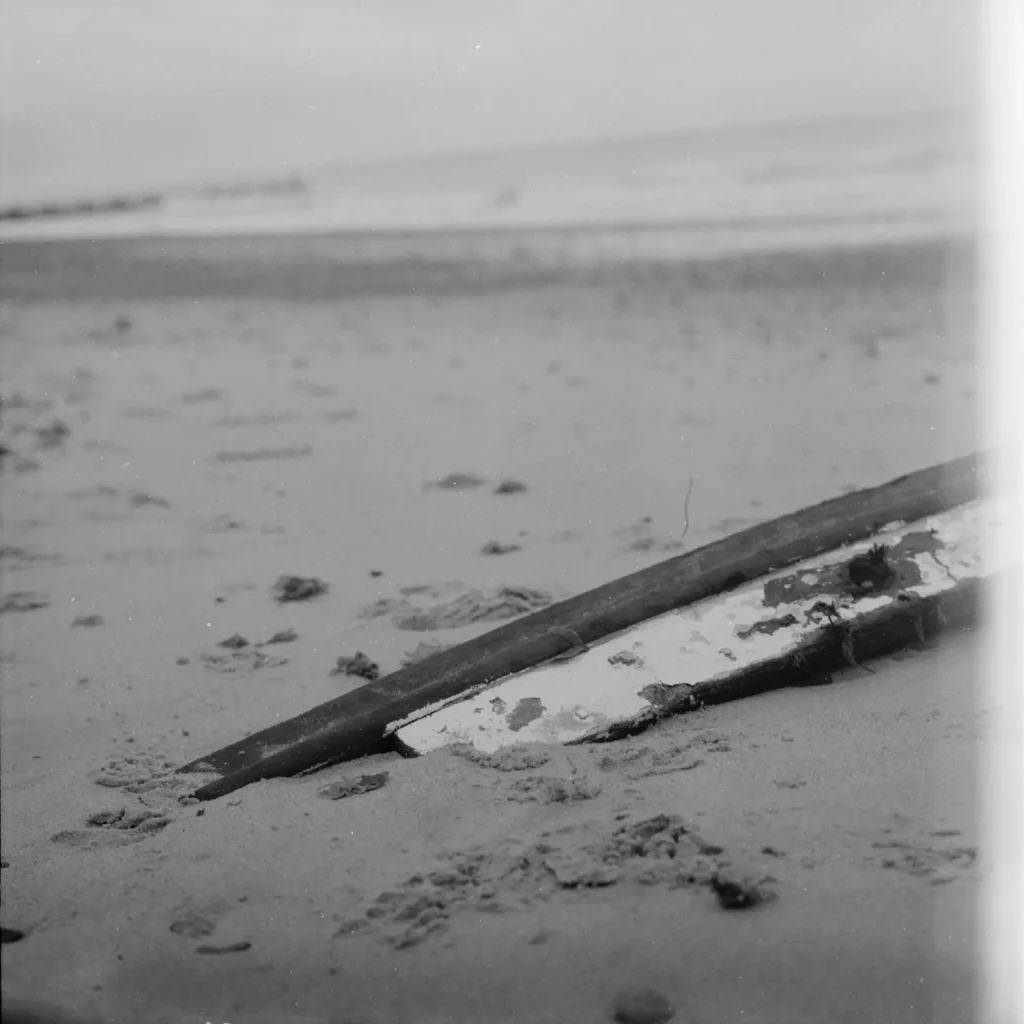
Jen: The only black and white I’ve souped is Ilford HP5+. It’s my go-to for shooting black and white, so I figured why not soup it.
Holly: Such a versatile film.
Amy: My very favorite is Superia XTRA 400. I only soup consumer films because they’re cheaper and produce punchier colors…and film soup is all about adding punchiness to images. So go ahead and grab a Superia or Lomo or Kodak Gold and go to town! One caveat is that I have noticed the grain structure of Kodak Ultramax 400 is affected by the souping process. Ultramax 400 grain has a tendency to “burst” in the process, forming little lines all over the film. (At least I think it’s the grain that is creating this effect…I’m not totally sure.) From what I gather Lomo 400 is most likely made by Kodak but it doesn’t respond the same way Kodak Ultramax 400 does. For whatever reason it just seems to be Ultramax…
Holly: How interesting, thanks for the tip. I know that souping film is not your only art form and I’m really interested in how a person’s’ hobbies and interests feed into their photography, would you mind sharing what other creative outlets you have?
Jen: I am primarily a Holga photographer. Lately, I’ve been adding mixed media and embroidery to my Holga images. I miss printing in the darkroom. There is just nothing quite like creating with your hands (one of the reasons I love developing at home and souping my film – gives it an added layer of personal touch). Anyway…adding embroidery and other pieces to my prints allows me to be more involved in the process of creating. I’ve found so much joy in the process. I released my next collection – Retold Stories – on February 8 which is be available here.
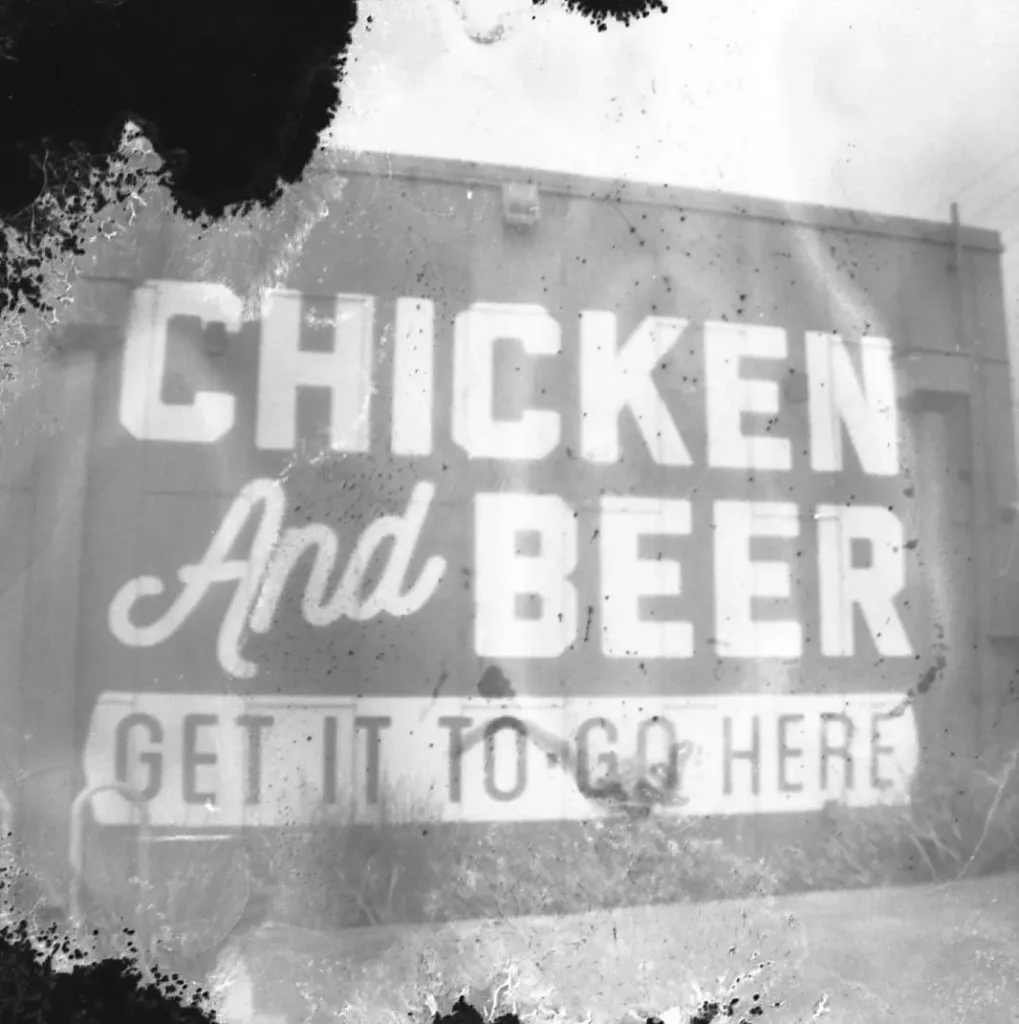
Amy: I call myself a collector of hobbies because I have way too many! Pre-kids I had more time for crafting, so some of that has fallen by the wayside but I still have plenty of creative outlets. I lead worship at our church, so singing and being in a band provide a unique outlet. Writing for Shoot It With Film has pushed me to find ways to explore this medium I love. I also do hand lettering and so I create art pieces usually on my iPad for various use. But I think my current obsession with film soup arises from my past intersecting with this present moment.
I majored in math in college and so understanding the world and finding order is where I feel the safest. Being a mother of three young, energetic boys in the middle of a pandemic has created a sort of chaos, and in order to survive I’ve had to hold loosely to the ideas of order and making sense of things. It’s when those ideas are held loosely that I’m able to find the beauty in the moment; I already know how to find beauty in the order, so finding beauty in the chaos has been a challenge but film soup helps with that. The souping process cannot fully be controlled, but it has helped me create some of my favorite images I’ve taken. Film soup is part metaphor and part exercise in letting go.
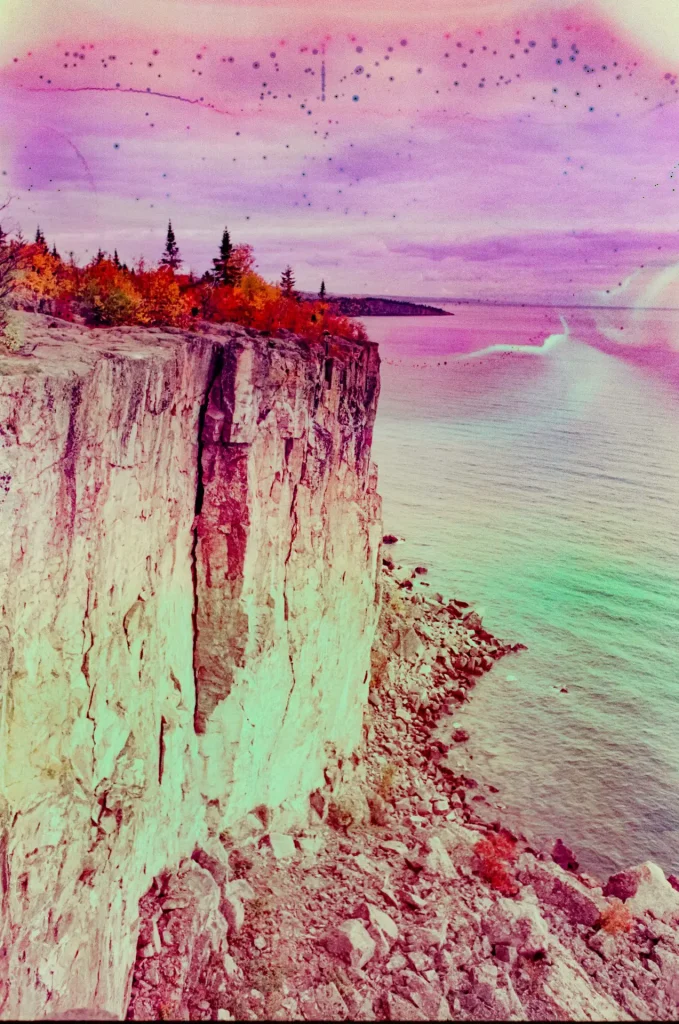
Holly: Beautiful, I too am a mother to 2 young boys and crave order in life. In my article exploring film soup I talk about how film soup brings back memories of being a little girl, creating potions in the garden but I can totally relate to the idea of using this as a way to safely let go of control. Are you working on or planning any projects that you’d like to share?
Jen: My new mixed media collection launches on February 8. I have a few more ideas that I’d like to work on and add to the collection even after it’s launched. Along with my mixed media work, I’ve enjoyed working with photographers and encouraging them to pick up their cameras and shoot! I connect with other photographers and share regular photo prompts on my Instagram stories. I also organize a small community of film shooters with monthly photo prompts. It’s been so fun connecting with people from all over through our common love of film photography.
Towards the end of 2020, I started studying wabi-sabi (the Japanese aesthetic of beauty of the imperfect and impermanent). Through my study, I’ve decided to shoot with only my collection of Holga cameras (yes, collection! – oops!) Holga images are naturally, technically imperfect, so it seemed fitting. I don’t know where my study will take me or how long I’ll shoot with only my Holga, but so far I love it. It’s reconnecting me with my film roots (imperfect, plastic cameras). I’m excited to see where this study will take me.
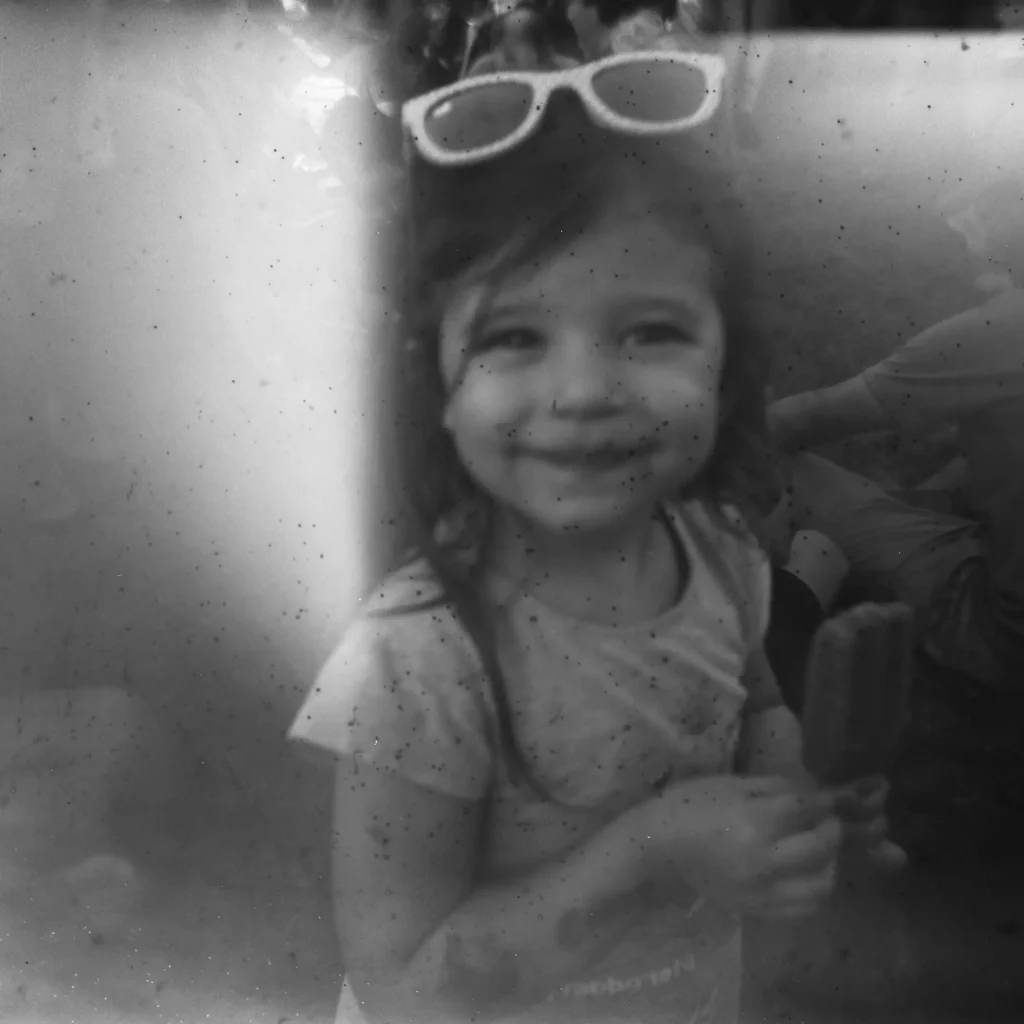
Amy: With writing for Shoot It With Film, I’ve enjoyed diving into the educational side of photography, particularly shooting film. I have posted articles ranging from developing film (C41 and black and white) to stock comparisons to camera reviews. I was hoping to get some more formalized education rolling this year, but with my children home for distance learning my plans have been a little derailed. Hoping I can get some of these projects going in the near future!
Holly: Amy, I think it’s fantastic that you have set up your own film lab specifically for souped film. Could you tell me a bit more about why you decided to do this, what you offer and how you are finding it?
Amy: Thank you so much! I started Film Lab 135 on September 1, 2020 because I feel like I owe so much to film soup for getting me out of my creative slump in the midst of the 2020 craziness, and I really wanted to share that with others. It seems like so many people WANT to try film soup but don’t have a lab that will take souped film (for obvious reasons) and don’t necessarily want to or have the space or time to develop their own film. Because I develop by hand I don’t have to worry about a machine getting gunked up or the entire batch of chemicals getting ruined. I spend my days with a lot of energy and action, so it’s kind of nice to retreat to my basement and spend time developing and scanning film.
I will process any 35mm C-41 or E6 film that comes my way, but everything gets developed in C-41 chemicals (so E6 film gets cross-processed) and it all gets developed with other film that has been souped. I develop by hand, scan on a Noritsu LS-600, and then edit the scans to deliver to the client.
Film soup right out the gate actually (maybe surprisingly) looks muddy. Like, how can a film that is so vibrant in final product be so muddy in a straight scan? So I make adjustments in-scanner and then edit to bring out the soupiness. When I do this, I try to find pieces of the film that have the original scene and determine colors from there.
I am absolutely loving being able to provide this service for others and have creative outlet for myself. I am thankful I have the tools to do this and wanted to share that with the small segment of the film community that has wanted to try it!
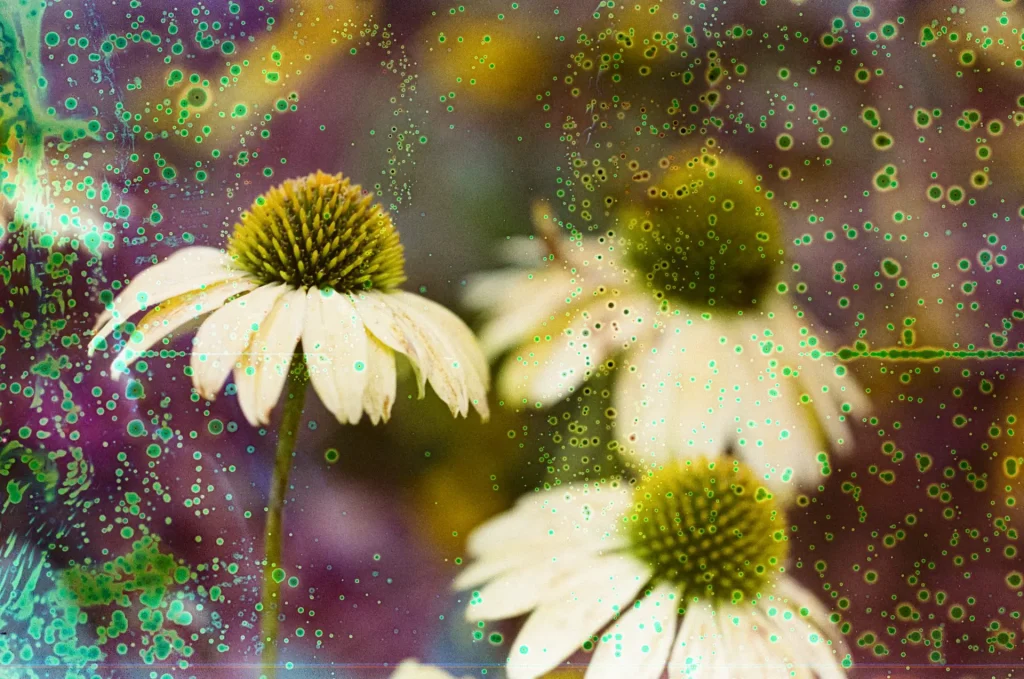
Holly: Thank you so much for this, I have thoroughly enjoyed talking with you!
If you want to find more of their work and writings you can find Jen on her website or on Instagram and you can find Amy on Instagram or on her website. And of course, you can find more of their musings on Shoot It With Film. If you are interested in seeing more of my work, you can check out my Instagram, my website and my other 35mmc articles 🙂
Share this post:
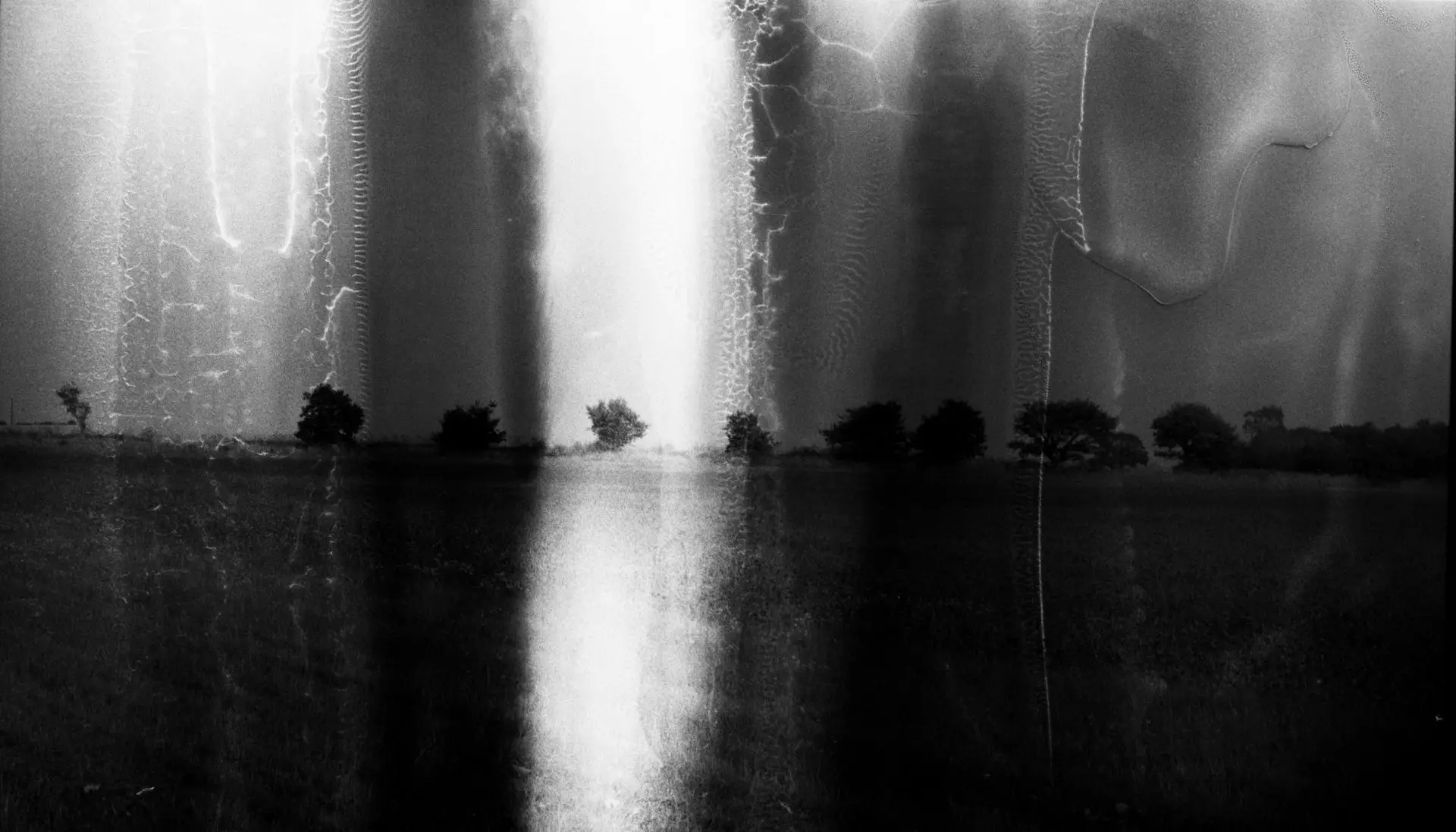








Comments
Tony Smith on A Conversation between Film Soupers Amy Berge and Jen Stamps – By Holly Gilman
Comment posted: 10/05/2021
Comment posted: 10/05/2021
Peggy on A Conversation between Film Soupers Amy Berge and Jen Stamps – By Holly Gilman
Comment posted: 07/07/2021
Troy Phillips on A Conversation between Film Soupers Amy Berge and Jen Stamps – By Holly Gilman
Comment posted: 06/04/2022
Definitely wanting to try some film soup and don’t develop at home . I want to try a photo series shooting some Hippie Band artists and Singer Songwriter folks and soup the film . Going to look into film 135 . Thanks for this article. Reading what the two lady’s have to say is inspirational to a vision I have . Good stuff peace Y’all
Comment posted: 06/04/2022